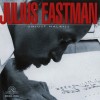| Country: | United States Of America |
| Period: | Minimalism |
Biography
Julius Eastman (October 27, 1940 – May 28, 1990) was an African-American composer, pianist, vocalist, and dancer of minimalist tendencies. He was among the first musicians to combine minimalist processes with elements of pop music. He often gave his pieces titles with provocative political intent, such as Evil Nigger and Gay Guerrilla.
Julius Eastman grew up in Ithaca, New York, with his mother, Frances Eastman, and younger brother, Gerry. He began studying piano at age 14 and made rapid progress. He studied at Ithaca College before transferring to the Curtis Institute of Music in Philadelphia. There he studied piano with Mieczyslaw Horszowski and composition with Constant Vauclain, and switched majors from piano to composition. He made his debut as a pianist in 1966 at Town Hall in New York City immediately after graduating from Curtis. Eastman had a rich, deep, and extremely flexible singing voice, for which he became noted for his 1973 Nonesuch recording of Eight Songs for a Mad King by the British composer Peter Maxwell Davies. Eastman's talents gained the attention of composer-conductor Lukas Foss, who conducted Davies' music in performance at the Brooklyn Philharmonic.
At the behest of Foss, Eastman joined the Creative Associates—a "prestigious program in avant-garde classical music" that "carried a stipend but no teaching obligations"[1]—at SUNY Buffalo's Center for the Creative and Performing Arts. There he met Petr Kotik, a Czech-born composer, conductor, and flutist. Eastman and Kotik performed together extensively in the early to mid-1970s. Along with Kotik, Eastman was a founding member of the S.E.M. Ensemble.
From 1971 he performed and toured with the group, and composed numerous works for it. During this period, fifteen of Eastman's earliest works were performed by the Creative Associates, including Stay On It (1973), an early augury of postminimalism and one of the first art music compositions inspired by progressions from popular music, presaging the later innovations of Russell and Rhys Chatham. Although Eastman began to teach theory and composition courses over the course of his tenure, he left Buffalo in 1975 following a controversially ribald performance of John Cage's aleatoric Songbooks by the S.E.M. Ensemble (facilitated by Morton Feldman. It included nudity and homoerotic allusions interpolated by Eastman, during a visit from the elderly Cage. The latter was incensed and said during an ensuing lecture that Eastman's "[ego]... is closed in on homosexuality. And we know this because he has no other ideas." Additionally, Eastman's friend Kyle Gann has speculated that his inability to acclimate to the more bureaucratic elements of academic life (including paperwork) may have hastened his departure from the university.[2]
Shortly thereafter, Eastman settled in New York City, where he initially straddled the divide between the conventionally bifurcated "uptown" and downtown music scenes. Eastman often wrote his music following what he called an "organic" principle. Each new section of a work contained all the information from previous sections, though sometimes "the information is taken out at a gradual and logical rate." The principle is most evident in his three works for four pianos, Evil Nigger, Crazy Nigger, and Gay Guerrilla, all from around 1979. The last of these appropriates Martin Luther's hymn, "A Mighty Fortress Is Our God," as a gay manifesto.[3] In 1976, Eastman participated in a performance of Eight Songs for a Mad King conducted by Pierre Boulez at Lincoln Center. He served as the first male vocalist in Meredith Monk's ensemble, as documented on her influential album Dolmen Music (1981). He fostered a strong kinship and collaboration with Arthur Russell, conducting nearly all of his orchestral recordings (compiled as First Thought Best Thought [Audika Records, 2006]) and participating (as organist and vocalist) in the recording of 24-24 Music (1982; released under the imprimatur of Dinosaur L), a controversial disco-influenced composition that included the underground dance hits "Go Bang!" and "In the Cornbelt"; both featured Eastman's trademark bravado.
During this period, he also played in a jazz ensemble with his brother Gerry (erstwhile guitarist of the Count Basie Orchestra). he also coordinated the Brooklyn Philharmonic's outreach-oriented Community Concert Series (performed by the CETA Orchestra funded by the John F. Kennedy Center for the Performing Arts) in conjunction with Foss and other composers of color. By 1980, he was regularly touring across the United States and internationally; a recording of a performance from that year at Northwestern University was released on the posthumous compilation Unjust Malaise (2005).[1]
A 1981 piece for Eastman's voice and cello ensemble, The Holy Presence of Jeanne d'Arc, was performed at The Kitchen in New York City. In 1986, the choreographer Molissa Fenley set his dance, Geologic Moments, to Eastman's Thruway, which premiered at the Brooklyn Academy of Music.
Despondent about what he saw as a dearth of worthy professional opportunities, Eastman grew increasingly dependent on drugs (including alcohol and possibly crack cocaine) after 1983. His life fell apart; many of his scores were impounded by the New York City Sheriff's Office following an eviction in the early 1980s, further impeding his professional development. While homeless, he briefly took refuge in Tompkins Square Park. A promised lectureship at Cornell University also failed to materialize during this period.
Despite a temporary attempt at a comeback, Eastman died alone at the age of 49 in Millard Fillmore Hospital in Buffalo, New York of cardiac arrest. No public notice was given to his death until an obituary by Kyle Gann appeared in the Village Voice; it was dated January 22, 1991, eight months after Eastman died.[4] As Eastman's notational methods were loose and open to interpretation, revival of his music has been a difficult task, dependent on people who worked with him.







